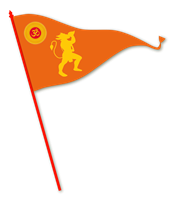The Great Heritage of Ayurved

Ayurved is Sanaatan
Ayurved is attributed to Bhagwan Shri Dhanvantari, the physician to the gods in Hindu and Sanaatan Dharma, who received it from Brahma ji.
The word Ayurved is derived from two words in Sanskrit, “ayuh” meaning “life” or “longevity” and “ved” meaning “science” or “sacred knowledge. The evolution of the Indian art of healing and living a healthy life comes from the four Veds namely : Rig ved , Sama ved , Yajur ved and Atharva ved . Ayurved attained a state of reverence and is classified as one of the UpaVeds – a subsection – attached to the Atharva Ved
Ayurveds earliest concepts were set out in the portion of the Veds known as the Atharvaved (c. 2nd millennium BCE). The period of Vedic medicine lasted until about 800 BCE The golden age of Indian medicine, from 800 BCE until about 1000 CE, was marked especially by the production of the medical treatises known as the Charak-Samhita and Susruta-Samhita, attributed respectively to Charak, a physician, and Susruta, a surgeon.
According to Ayurved everything in life is composed of the Panchamahabhutas — Akash , Vayu , Jal , Agni and Prithvi.
Ayurved identifies three basic types of energy or functional principles that are present in everyone and everything. Since there are no single words in English that convey these concepts, we use the original Sanskrit words vata, pitta and kapha. These principles can be related to the basic biology of the body.
According to Ayurvedic Tridosha Theory the disease in the body is created due to an imbalance of Tridoshas named Vata Dosha, Pitta Dosha, and Kapha Dosha.
The symptoms of imbalance of Vata Dosha are Splitting of nails, foot drop, collapsed instep, Sciatica, Stiffness in the neck, Astringent taste in the mouth, Dryness in the mouth, Deafness, Insomnia, etc. The symptoms of imbalance of Pitta Dosha are a burning sensation, acid regurgitation, profuse sweating, unpleasant body odor, itching of skin, herpes, bitter taste, excessive thirst, conjunctivitis, fainting, etc. The symptoms of imbalance of Kapha Dosha are rheumatic arthritis, drowsiness, excessive sleep, timidness, heaviness in the body, weakness, phlegm adhered to the throat, obesity.
Ayurved incorporates all forms of lifestyle in therapy. Thus yoga, aroma, meditation, gems, amulets, herbs, diet, astrology, color and surgery etc. are used in a comprehensive manner in treating patients. Treating important and sensitive spots on the body called Marmas is described in Ayurved . Massages, exercises and yoga are recommended.
In summary, Ayurved addresses all aspects of life — the body, mind and spirit. It recognizes that each of us is unique, each responds differently to the many aspects of life, each possesses different strengths and weaknesses. Through insight, understanding and experience Ayurved presents a vast wealth of information on the relationships between causes and their effects, both immediate and subtle, for each unique individual.

Ayurved Healthcare Tips

According to Ayurvedic Tridosha Theory the disease in the body is created due to an imbalance of Tridoshas named Vata Dosha, Pitta Dosha, and Kapha Dosha.
General guidelines for balancing Vata:
Keep warm
Keep calm
Avoid cold, frozen or raw foods
Avoid extreme cold
Eat warm foods and spices
Keep a regular routine
Get plenty of rest
General guidelines for balancing Pitta:
Avoid excessive heat
Avoid excessive oil
Avoid excessive steam
Limit salt intake
Eat cooling, non-spicy foods
Exercise during the cooler part of the day
General guidelines for balancing Kapha:
Get plenty of exercise
Avoid heavy foods
Keep active
Avoid dairy
Avoid iced food or drinks
Vary your routine
Avoid fatty, oily foods
Eat light, dry food
No daytime naps
Ritucharya (seasonal routine) Ayurvedic literature divides the whole year into six seasons and recommends a specific dietary regimen for each season, including:
1. Spring season: Hot, astringent and bitter foods are recommended.
Eat barley, wheat, honey syrup, and fruits such as mango and jackfruit
Avoid sweet, salty and sour foods.
2. Summer season: Liquid, cold, sweet and oily diet is recommended.
Eat rice, sugar, ghee, and drink milk and coconut water.
Avoid excessive spicy, hot, salty, and sour diets.
3. Rainy season: Hot, sour, sweet, salty, dry, and easily digestible foods are recommended.
Eat wheat, barley and rice.
4. Pre-winter and winter seasons: Hot, sour, sweet and salty diet is recommended.
Have rice, sugarcane, oils and fats.
5. Autumn season: Bitter, pungent and sweet foods are recommended.
Consume ghee processed with bitter drugs.






